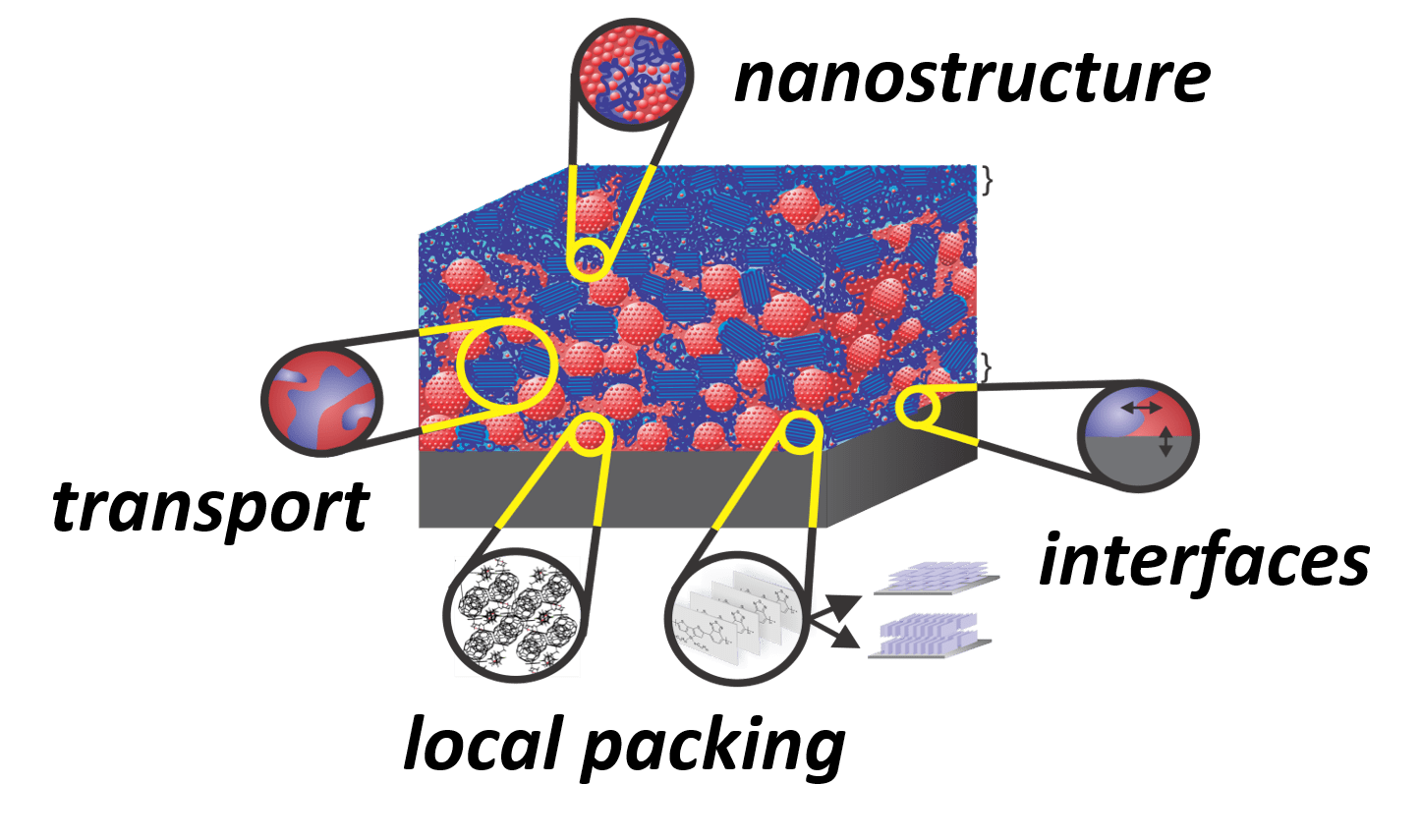Organic semiconductors are highly promising materials for solar cell applications when the photovoltaic device needs be light-weight, solution-processable, spectrally tunable and amenable to flexible and stretchable architectures. The thin active layer of a state-of-the-art organic photovoltaic (OPV) device often consists of a two-component blend of a conjugated polymer and a small molecule. The resulting bulk donor/acceptor interface between the two components converts sunlight into mobile charge carriers, which must efficiently traverse the active layer to power an external load. The OPV field went through a relative lull in the recent past but has now made a significant resurgence due to the development of new classes of small molecules that led to highly promising power conversion efficiencies in excess of 17%.

Cartoon of an organic solar cell device composed of a conjugated polymer/small-molecule blend. Some of the factors that strongly influence the photovoltaic power conversion efficiency have been highlighted.
Of the large unsolved problems still plaguing the OPV field, understanding how to control long-range charge transport through the interpenetrating polymer/molecule network has proved one of the more challenging. This necessitates determining how to form the kinds of network morphologies that are conducive to efficient charge migration through a generally tortuous, highly rugged landscape with a structural hierarchy from few to 100s of nanometers. We are broadly working on characterizing and elucidating how the structure of the small molecule directs the formation of the nanoscale charge-transport network formed inside the polymer matrix. The ultimate goal of this work is to provide the synthetic chemist with a roadmap to link molecular structure to nanoscale morphology at the outset, thus rationally manipulating charge transport and thereby minimizing endless material combinations in a trial-and-error fashion.

